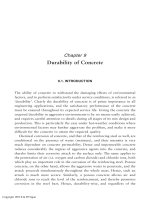Interpersonal chapter 9 interpersonal communication in close relationships
Bạn đang xem bản rút gọn của tài liệu. Xem và tải ngay bản đầy đủ của tài liệu tại đây (60.29 KB, 27 trang )
Interpersonal Communication
in Close Relationships
CHAPTER TOPICS
•
•
•
•
•
9
Intimacy in Close Relationships
Communication in Families
Communication in Friendships
Communication in Romantic Relationships
Improving Close Relationships
Looking Out/Looking In
Fourteenth Edition
Intimacy in Close Relationships
• Dimensions of Intimacy
•
•
•
•
Physical
Intellectual
Emotional
Shared Activities
• Some relationships exhibit all four dimensions
• Other relationships exhibit only one or two
Interpersonal Communication in Close Relationships
2
Intimacy in Close Relationships
• Masculine and Feminine Styles
• Research shows that women are somewhat
more willing than men to share their feelings
• In terms of amount and depth:
• Female – Female were at the top
• Male – Female came in second
• Male – Male had the least disclosure
• Biological sex is not as important as the
chosen gender role when expressing emotion
• Generalizations do not apply to every person
Interpersonal Communication in Close Relationships
3
Intimacy in Close Relationships
• Cultural Influences on Intimacy
• Notions of public and private selves have
changed dramatically
• Collectivist cultures
• Generally do not reach out to outsiders, often
waiting until they are properly introduced before
entering into conversation
• Individualistic cultures
• Make fewer distinctions between personal
relationships and casual ones
Interpersonal Communication in Close Relationships
4
Intimacy in Close Relationships
• Intimacy in Mediated Communication
• Mediated communication can be just as
personal as face-to-face interaction
• Relational intimacy may develop more quickly
through mediated channels
• Intimate connections in cyberspace can also be
problematic
• “Virtually unfaithful”
Interpersonal Communication in Close Relationships
5
Intimacy in Close Relationships
• The Limits of Intimacy
• Most people want 4-6 close relationships in
their lives
• Obsession with intimacy can lead to less
satisfying relationships
• Intimacy is rewarding but it isn’t the only way
of relating to others
Interpersonal Communication in Close Relationships
6
Communication in Families
• Characteristics of Family Communication
• Family communication is formative
• Family communication is role-driven
• Family communication is involuntary
Interpersonal Communication in Close Relationships
7
Communication in Families
• Characteristics of Family Communication
• Families as systems
• Family systems are interdependent
• Family systems are manifested through
communication
• Family systems are nested
• Subsystems
• Suprasystems
• Families are more than the sum of their parts
Interpersonal Communication in Close Relationships
8
Communication in Families
• Communication Patterns within Families
• Conversation orientation
• High conversation orientation
• Low conversation orientation
• Conformity orientation
• High-conformity families
• Low-conformity families
Interpersonal Communication in Close Relationships
9
Communication in Families
• Communication Patterns within Families
• Consensual
• High conversation, high conformity
• Pluralistic
• High conversation, low conformity
• Protective
• Low conversation, high conformity
• Laissez-faire
• Low conversation, low conformity
Interpersonal Communication in Close Relationships
10
Communication in Friendships
• Types of Friendships
•
•
•
•
•
•
Youthful vs. mature
Long term vs. short term
Relationship oriented vs. task oriented
High disclosure vs. low disclosure
High obligation vs. low obligation
Frequent contact vs. occasional contact
Interpersonal Communication in Close Relationships
11
Communication in Friendships
• Sex, Gender, and Friendship
• Same-sex friendships
• Cross-sex friendships
• Mutual romance, strictly platonic, one partner desires
romance, one partner rejects romance
• Friends with benefits
Interpersonal Communication in Close Relationships
12
Communication in Friendships
• Sex, Gender, and Friendship
• Gender considerations
• Sex role
• Sexual orientation
Interpersonal Communication in Close Relationships
13
Communication in Friendships
• Friendship and Social Media
• Internet has made friendship more complicated
• Social networking sites used primarily to
maintain current friendships or to revive old
ones
• Social media isn’t a replacement for face-to-face
communication
• Means to support and rekindle friendships
Interpersonal Communication in Close Relationships
14
Communication in Romantic
Relationships
• Ancient Greek
• Storge and philla
• Friendly love
• Pragma
• Practical, logical affinity
• Agape
• Selfless, altruistic compassion
• Mania
• Eros
Interpersonal Communication in Close Relationships
15
Communication in Romantic
Relationships
• Romantic Turning Points
• Transformative events that alter the relationship
•
•
•
•
Especially important in romantic relationships
Often mark movement among stages
Not all turning points are positive
Can provide clues about the status of the relationship
Interpersonal Communication in Close Relationships
16
Communication in Romantic
Relationships
• Couples’ Conflict Styles
• John Gottman – conflict styles
• Volatile
• Avoidant
• Validating
Interpersonal Communication in Close Relationships
17
Communication in Romantic
Relationships
• Couples’ Conflict Styles
• Gary Chapman – love languages
•
•
•
•
•
Words of affirmation
Quality time
Gifts
Acts of service
Physical touch
• Assumption your partner speaks same love language as
you can be a setup for disappointment
Interpersonal Communication in Close Relationships
18
Improving Close Relationships
• Relationships Require Commitment
• Promise - sometimes implied, sometimes
explicit – to remain in a relationship and make it
successful
• Commitment formed and reinforced through
communication
• Words aren’t surefire measure of commitment
• Deeds are also important
Interpersonal Communication in Close Relationships
19
Improving Close Relationships
• Relationships Require Maintenance and
Support
• Relational maintenance strategies
•
•
•
•
•
Positivity
Openness
Assurances
Social networks
Sharing tasks
Interpersonal Communication in Close Relationships
20
Improving Close Relationships
• Relationships Require Maintenance and
Support
• Most used with family and friends
• Openness
• Social networks
• Most used with romantic partners
• Assurances
Interpersonal Communication in Close Relationships
21
Improving Close Relationships
• Relationships Require Maintenance and
Support
• Social support
• Helping loved ones through challenging times
• Communication plays a central role
• Resources
• Emotional support
• Informational support
• Instrumental support
Interpersonal Communication in Close Relationships
22
Improving Close Relationships
• Repairing Damaged Relationships
• Types of relational transgressions
•
•
•
•
•
Lack of commitment
Distance
Disrespect
Problematic emotions
Aggression
Interpersonal Communication in Close Relationships
23
Improving Close Relationships
• Repairing Damaged Relationships
• Relational transgressions
•
•
•
•
Minor vs. significant
Social vs. relational
Deliberate vs. unintentional
One-time vs. incremental
Interpersonal Communication in Close Relationships
24
Improving Close Relationships
• Repairing Damaged Relationships
• Strategies for relational repair
• Talk about the violation
• Take responsibility for the transgression
• Components of apology
• Expressing regret
• Accepting responsibility
• Making restitution
• Genuinely repenting
• Requesting forgiveness
Interpersonal Communication in Close Relationships
25









